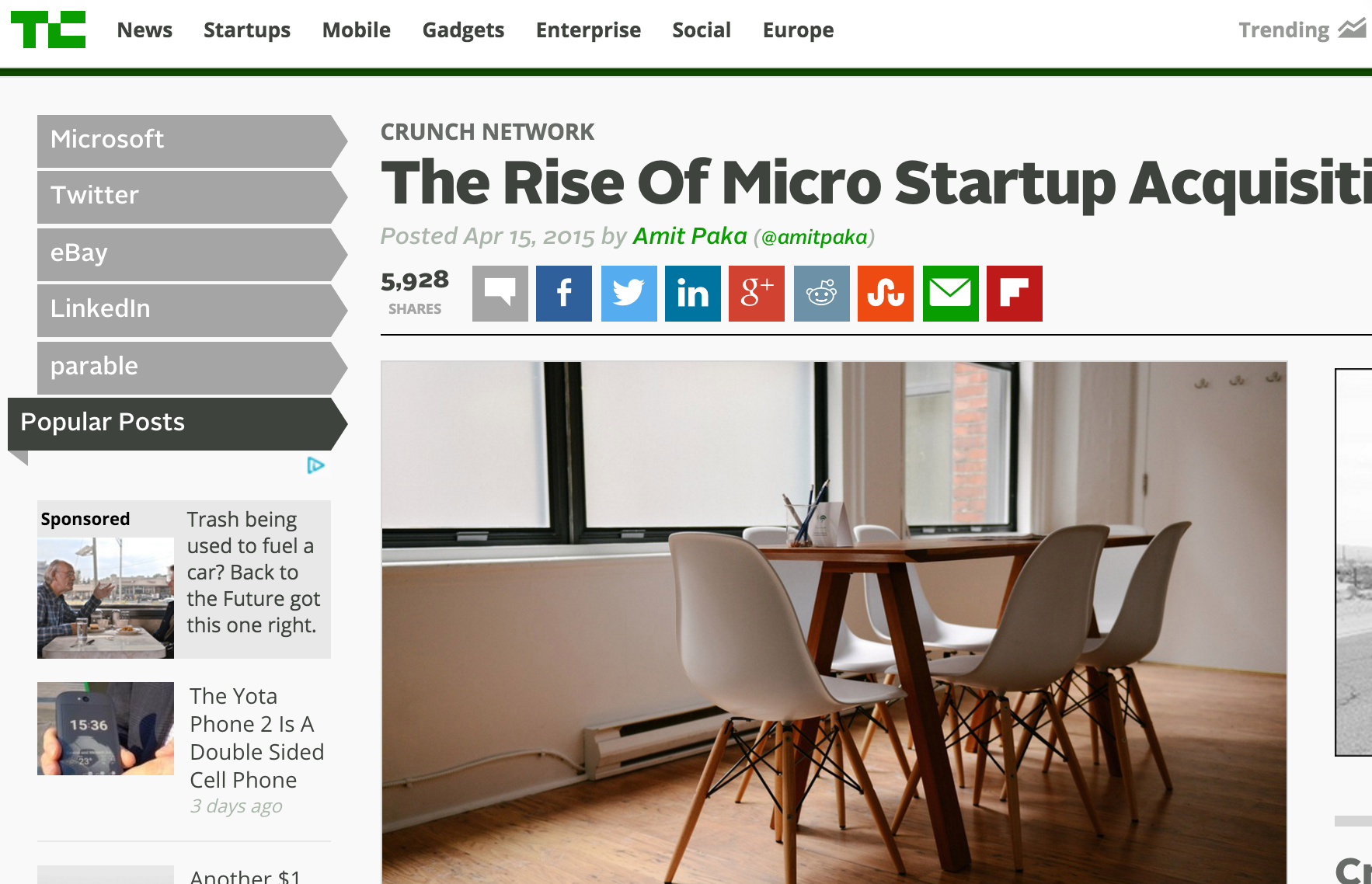Investors used to wait until startups had established some clout before getting interested, but those days may be over. Investors and “bigger fish” alike are on the lookout for micro startups that offer quick revenue boosts. Most recently, Pinterest bought a tiny startup, Hike Labs, which provided a much needed content curation boost to the social media giant. More and more Pinterest wannabes are following suit, figuring out that they can secure great talent for a fraction of the price tag that comes with more established startups.
In the past, tech investors and companies have largely looked at startups that already had proven products, revenue, and a decent pool of employees. However, bigger isn’t always better. There have been some major companies leading the trend of micro startup acquisitions such as Google, eBay, Facebook, Apple, and Twitter. For example, Microsoft just snagged LiveLoop and Accompli, even though history tells us Microsoft used to favor major deals (to the tune of several billion).
Cost Efficiency
The money necessary to offer software goods has been going down in recent years, while simultaneously there are more and more distribution channels. The Parable app, snagged by Apple, took just two people a couple of months to reach a global demographic. Ten years ago, such a feat would have been impossible. Bigger companies are also looking at goods, services and products that complement what they already have. This can put them on the fast track to getting there quicker, better and ahead of the competition.
Such a shift has put micro team acquisition on the map. Also known as “booster acquisitions,” these teams have one purpose: Up a product line with more products that are promising—but may not be proven yet. The actual art of product building is pretty simple, but creating the “right” kind of product isn’t as easy. Sometimes creating products within a major company, even with that financial backing, can be challenging. Red tape can lead to late launches and spending too much time/money/effort on the wrong idea. Google Wave, anyone?
Little Fish Making it in Big Ponds
A micro team can pull off what a big company team can’t. These teams are made up of experts with very niche specialties. They have strong momentum for execution, essentially letting companies finance them so that 100 percent of their efforts are on the right product creation. Take a look at Vine, which is now a Twitter acquisition. With Twitter’s resources and support, three people turned Vine into a major success in a short timeframe. It ended up benefitting the Vine group as well as Twitter.
The fights for high talent in tech hubs are epic. Major companies can skip the learning curve because micro teams are already amped up. The micro teams can rapidly expand their revenue, like when Flockish was acquired by eBay and upped ticket bookings ten times over. Another example is when Instagram picked up Luma—that three-person “department” focused on video stabilization tech that became paramount in creating Instagram’s Hyperlapse app.
However, the biggest perk of all for investors and companies is getting that can-do, determined attitude that’s only found in micro startups. These people are hungry for success, and happy to share it with their newfound “big brothers and sisters” who are flush with cash.

